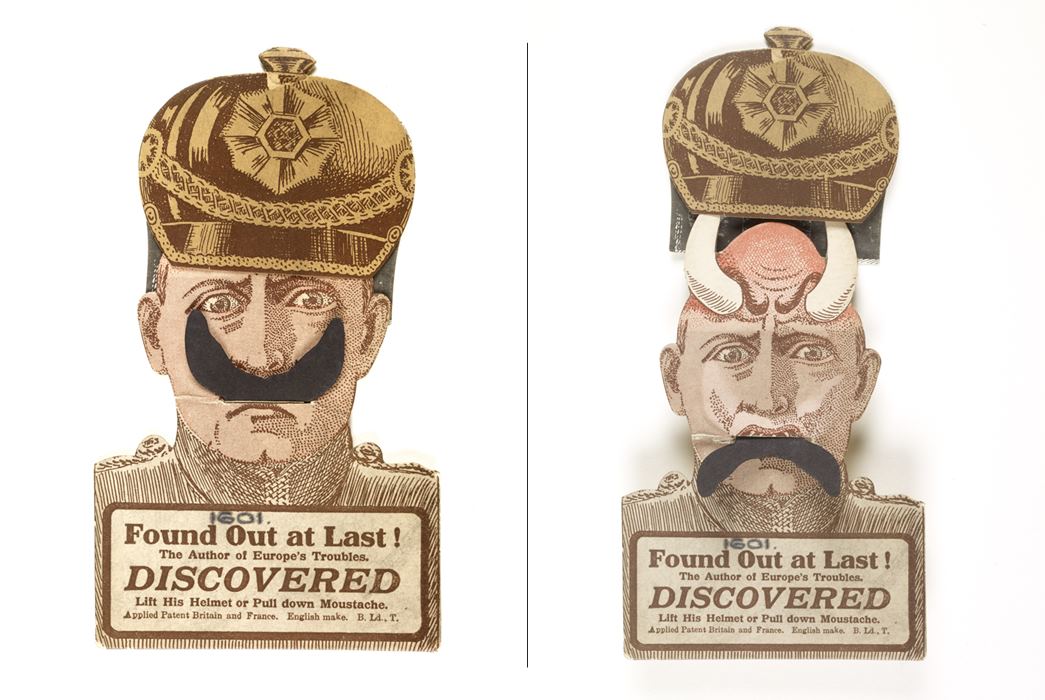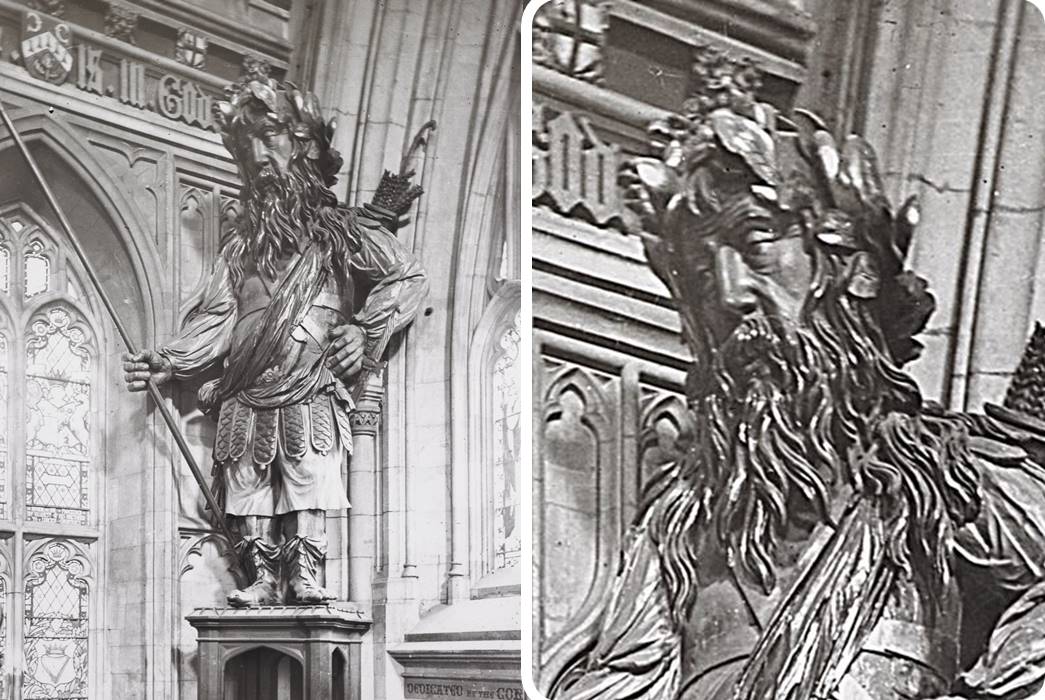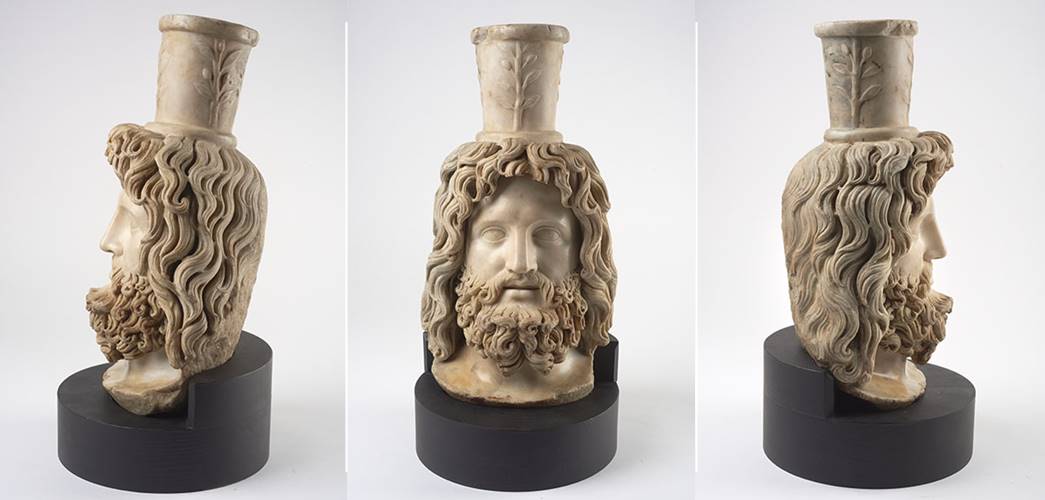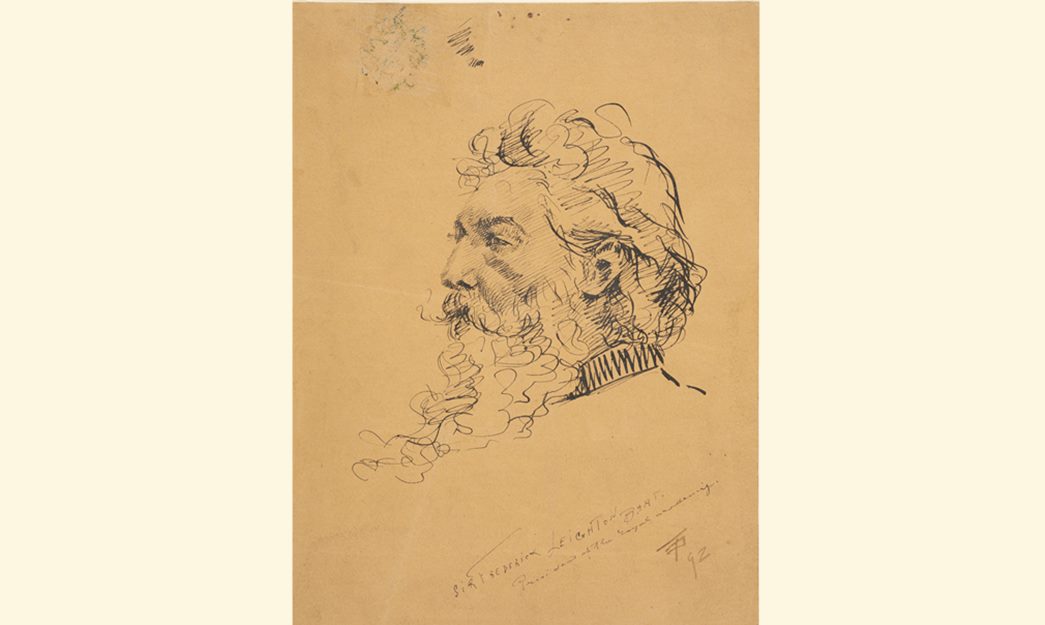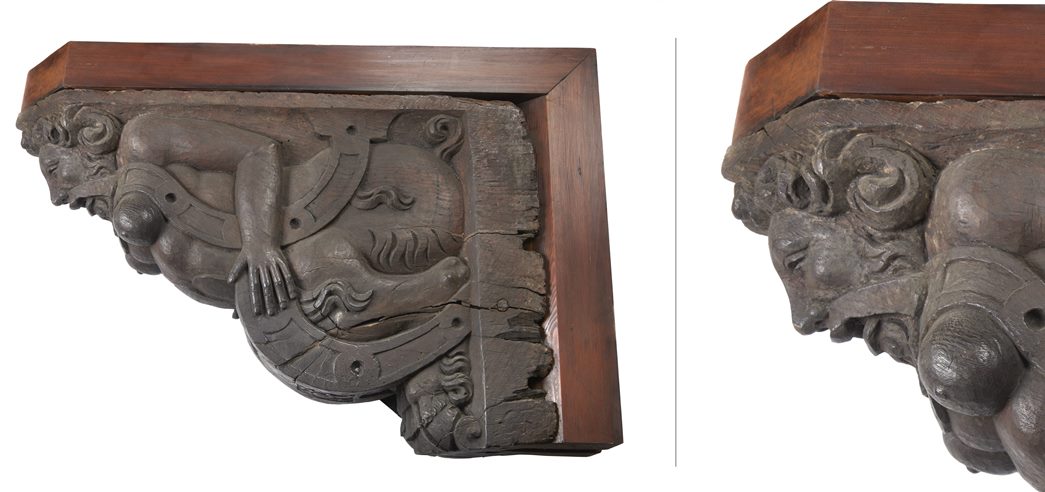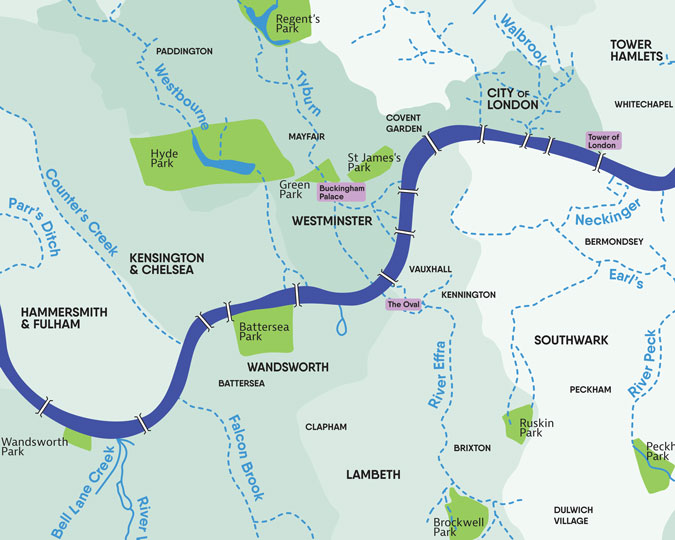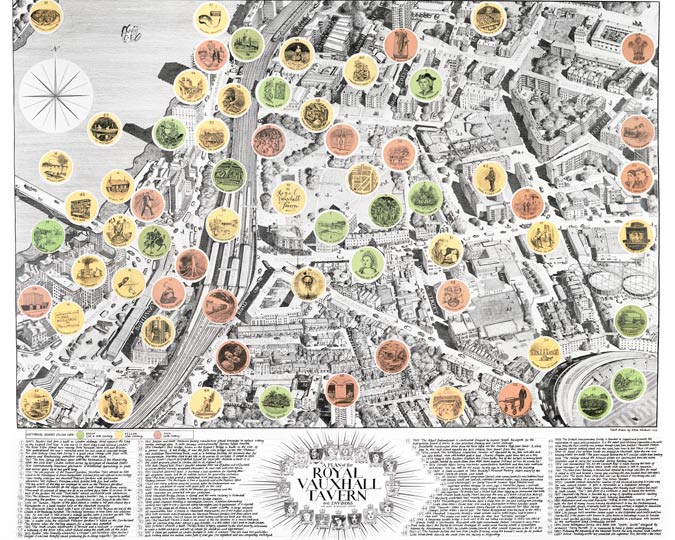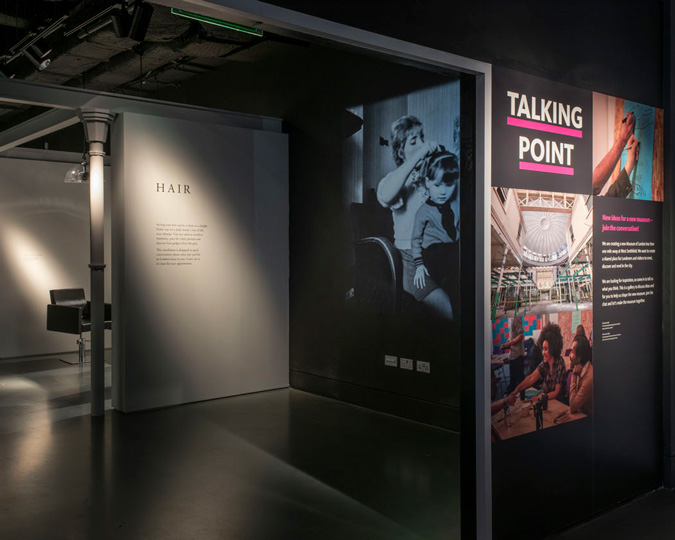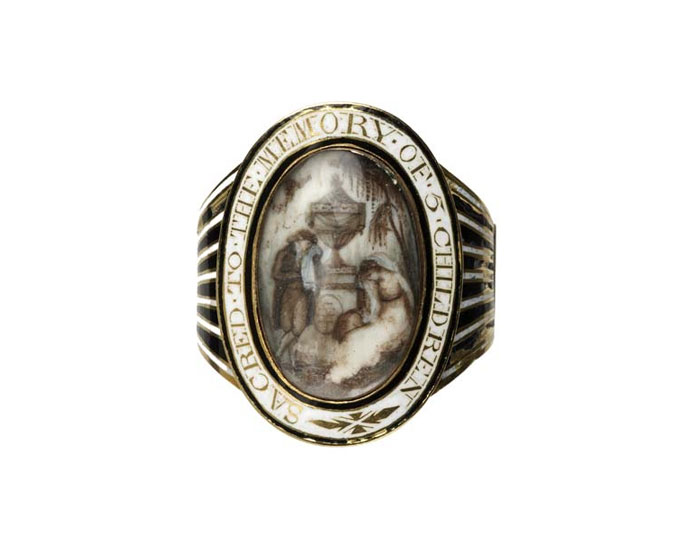Is your upper lip looking less than fan-tache-tic? Are your whiskers whispy? Your sideburns a burden? Your goatee gone wild? Seeking ideas for your Movember look? Well look no further. Here are nine remarkable beards and moustaches from the London Collection to inspire your facial hairstyles this November.
Londoners — both men, and women! — have sported a wide range of moustache and beard styles over the last two thousand years. Taking influences from visitors and immigrants from around the world, the capital city was frequently at the cutting edge of pogonotrophy (the growing and grooming of facial hair).
Trends were often set by famous Londoners, such as King Charles I, whose goatee and upturned moustache were copied by courtiers and immortalised by the Principal Painter to the king, Anthony van Dyck, who gave his name to the style. The ‘van Dyke’ was politicised during the English Civil War through its association with the Royalist Cause, while Parliamentarians became known as ‘roundheads’ because of their closely cropped hair and beards. Charles Dickens can be credited with starting the Victorian trend for huge beards, not only because he sported such a fine example himself, but also for publishing Henry Morley's essay ‘Why Shave?’ in his popular magazine Household Words in 1853. The fashion was cemented when heavily bearded soldiers returned from the Crimean War in 1856, starting a craze that continued until the 1880s. South Londoner Charlie Chaplin became synonymous with the toothbrush moustache which he wore from the 1910s; although it fell out of fashion in the late 1930s owing to its association with Adolf Hitler. Beards and moustaches had a renaissance in the late 1960s. The Beatles — now London-based — grew Edwardian-style moustaches for the Sargent Pepper album cover, and even included cardboard cut-out moustaches as an insert. While facial hair fell out of fashion during the 1980s and 1990s, it made a comeback with the hipsters of the 2010s, who made Hackney their spiritual home.
Nowadays anything goes. So why not try one of the following.
The Kaiser Wilhelm: Devilish good looks
The World Beard and Moustache Championships defines the Imperial as a bushy moustache with the tips curled upward. And it doesn't get much more imperial than Kaiser Wilhelm II, the last German Emperor and King of Prussia. This one went rapidly out of style in the late 1890s as British relations with the German Emperor soured, and was — by 1914 — a source of ridicule. In this mechanical game, you can lift Wilhelm’s helmet to reveal devil horns and turn his ‘tache into a forked tongue.
The Giant: Leave your friends agog!
Long before Wenlock and Mandeville's smooth faces (and bodies) greeted visitors to the London 2012 Olympics, the capital had two much larger — and hairier — mascots. According to London legend, the giants Gog and Magog (also known as Gogmagog and Cornelius) were defeated by Brutus and chained to the gates of his palace on the site of the Guildhall. In this 1708 carving by Captain Richard Saunders, Gog's luscious hair and beard combo reach well down his shoulders. Try setting off the look with a fetching laurel wreath.
The Bartmann: A popular German import
Not to be confused with the Simpsons-themed rap of the 1990s, Bartmann jugs were imported into London from the Rhineland in their tens of thousands in the 16th and 17th centuries. Used to hold food and drink or decant wine, these popular stoneware bottles sported the mask of a bearded man (‘bartmann’ in German), derived from the European myth of the wild man. So why not go wild and do the Bartmann this November.
The Leatherman: A classic ’80s look
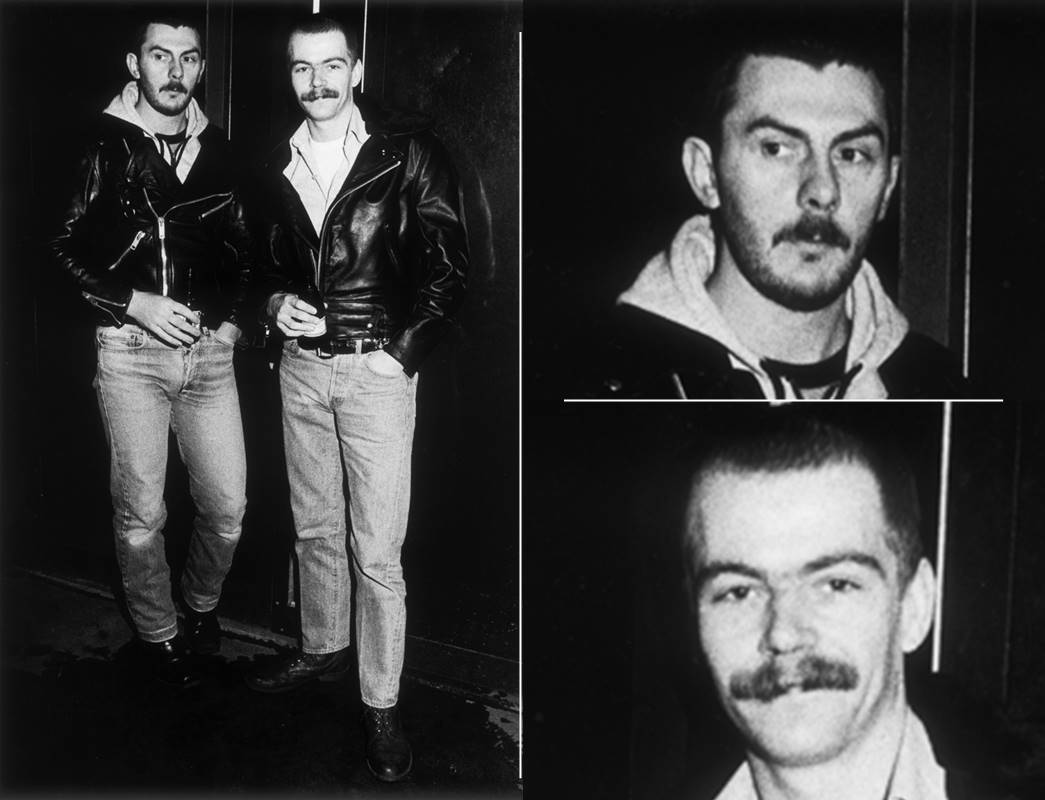
Two young men wearing jeans and leather jackets inside a social venue. Photograph by Anna Koffmann, 1985. (ID no.: IN16862)
A chevron moustache is a popular accompaniment to the leatherman look. Tracing its roots back to US biker gangs of the 1940s and ’50s, this gay subculture is about reclaiming masculinity — ergo, a moustache! Freddie Mercury made the look mainstream in the 1980s, but it is now at risk of dying out as all but one of London’s leather bars (the Backstreet in Mile End) has closed down. Why not bring it back this Movember?!
The Serapis: Heavenly Locks
Serapis’ cascading locks were sadly hidden from view for 1600 years as his head lay buried beneath Bucklersbury House on Walbrook in the City of London. Originally adorning a niche in the Roman Temple of Mithras, before being deliberately buried when the temple changed or went out of use, the sculpture was uncovered in 1954 and is now part of the Museum of London’s Roman collection. Serapis was the Egyptian god of the underworld. His fetching ‘modius’ (a corn measure), which he wears like a hat, symbolised the wealth and fertility of the earth. Try pairing a plant pot with your symmetrically curled hair and beard to achieve the look.
The Sir Frederic Leighton: Victorian aesthete
Sir Frederic Leighton was one of the leading artists of the second half of the 19th century and sported one of the period’s most splendid beards. Known for his historical, biblical and classical subjects painted in an academic manner, Leighton rose to the top of Britain’s artistic establishment, serving as president of the Royal Academy of Arts for 18 years. Offering a great look for the silver-haired gentleman, the long curly beard really must be set off with casually swept back hair. Leave a few loose curls across the brow to achieve the full effect.
The General Booth: Let William come to your salvation
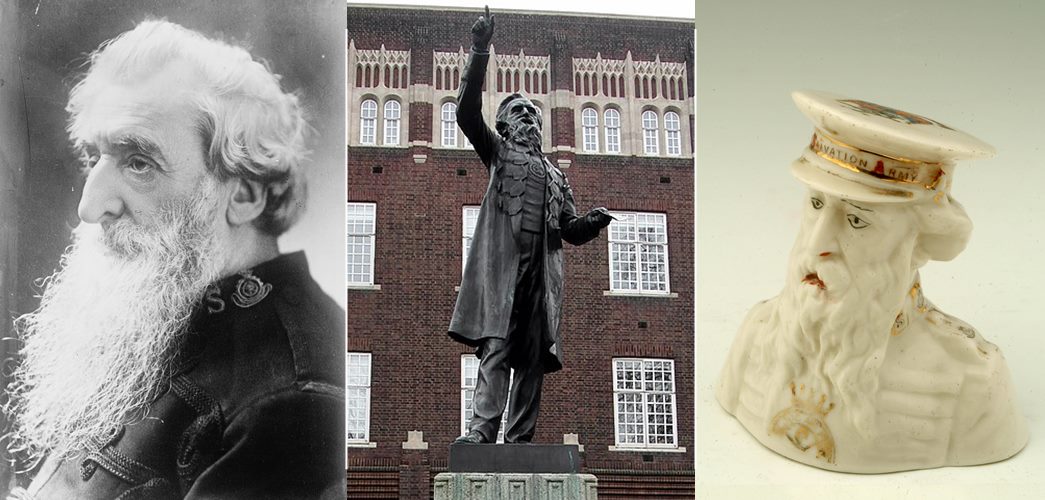
(from left) General William Booth, a British Methodist preacher, founder The Salvation Army; his statue in front of the William Booth Memorial Training College; and a porcelain bust, 1876-1900, in the MoL collection, 1876-1900. (Wikimedia Commons and ID no. 81.273)
Another classic Victorian style is to centre-part a long beard for a forked effect. Here it is sported by General Booth, who frames his mid-length locks with a stylish military-style peaked cap. William Booth, a Methodist preacher, founded the East London Christian Mission with his wife Catherine in 1865. The Salvation Army (as it later became known) is a Christian church and charity, established to meet both the spiritual and physical needs of the poor, and their military uniforms have never gone out of style.
The Faun: 17th-century style
For our next look, let’s ditch the male models and look to the non-human world for inspiration. Here is one of four carved oak brackets that once supported the roof of Albert House in Garratt Lane, Wandsworth. This hybrid figure frames their pointed beard and long moustaches with a loose perm. The height of Jacobean fashion! But the full look takes serious commitment, adding bare breasts, hairy legs, a curly tail and cloven hooves.
The LeFort: ‘A magnet of irresistible and universal attraction’
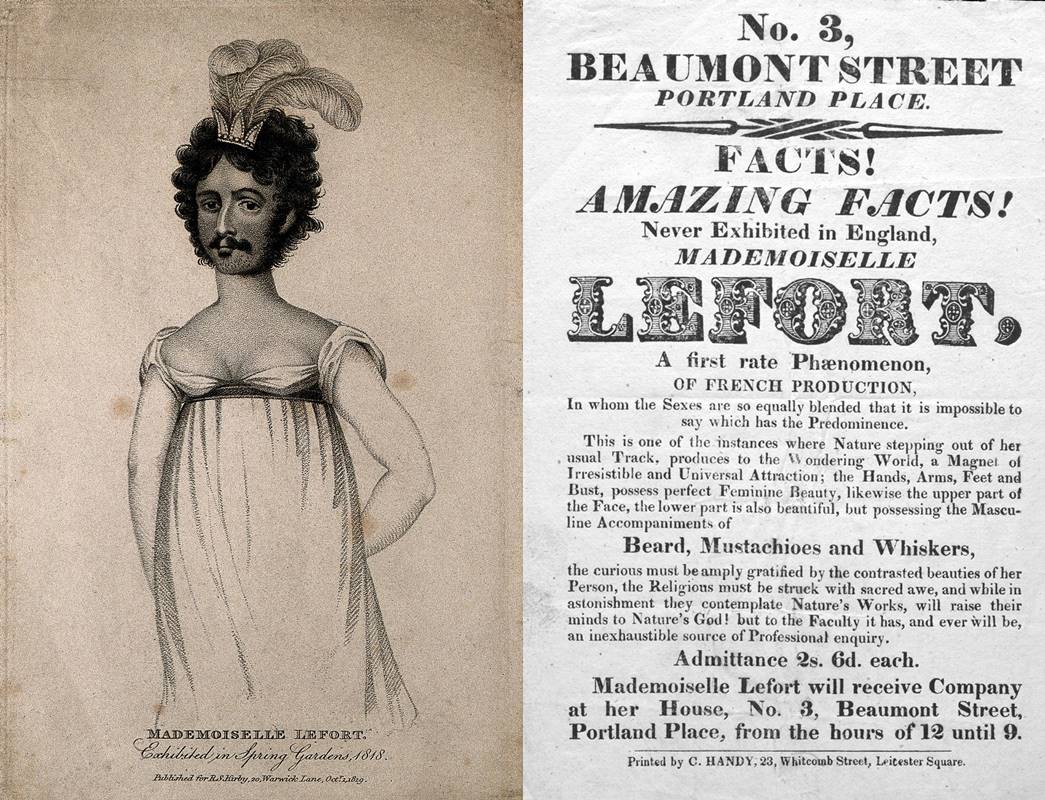
A sketch of Mademoiselle Lefort, a French phenomenon referred to as someone 'In whom the Sexes are so equally blended that it is impossible to say which has the Predominence’; and a handbill announcing an exhibition of Mademoiselle Lefort in London, 1818 (Wikimedia Commons and ID no.: 82.415)
One 19th-century woman became so famous for her ‘beard, mustachios and whiskers’ that she toured London in 1818, charging 2 shillings and 6 pence to curious visitors. Mademoisselle Lefort was praised for her ‘contrasting beauties’ combining ‘perfect feminine beauty’ with ‘masculine accompaniments’.
So whoever you are, why not wear one of these historical London looks this November and help change the face of men’s health. Visit https://uk.movember.com/ for more information.








